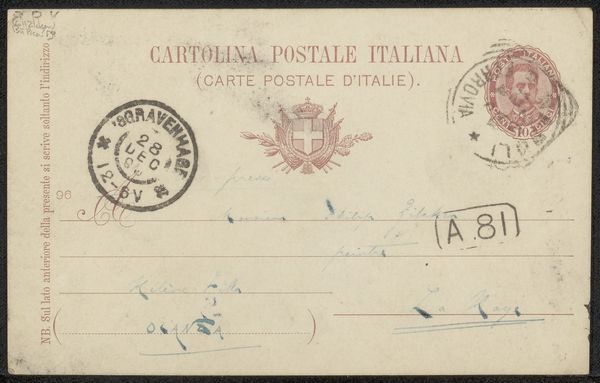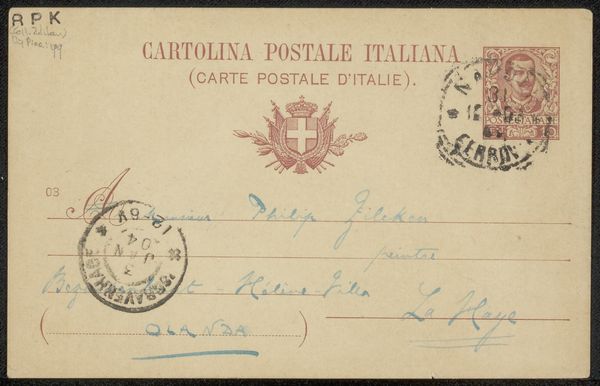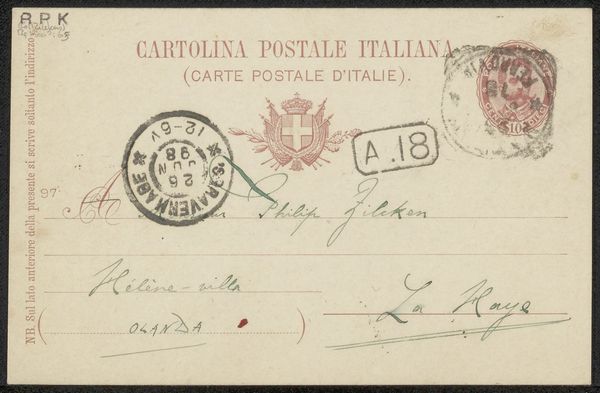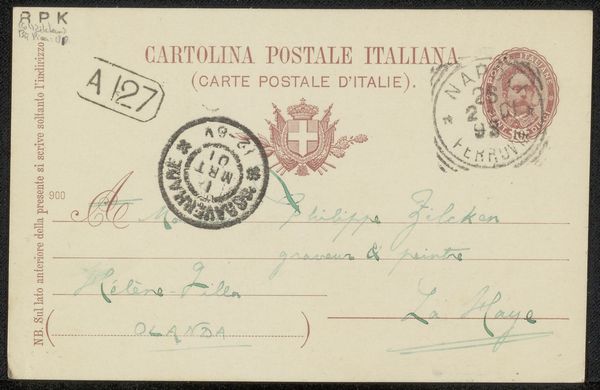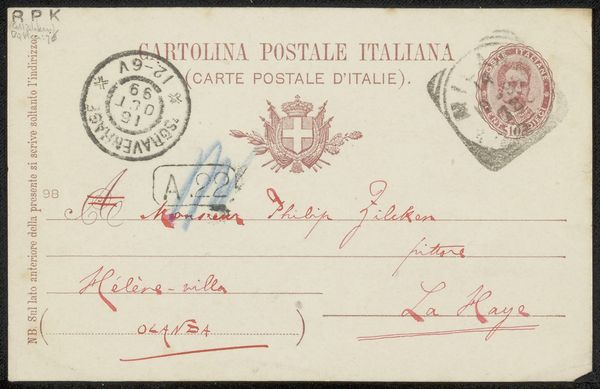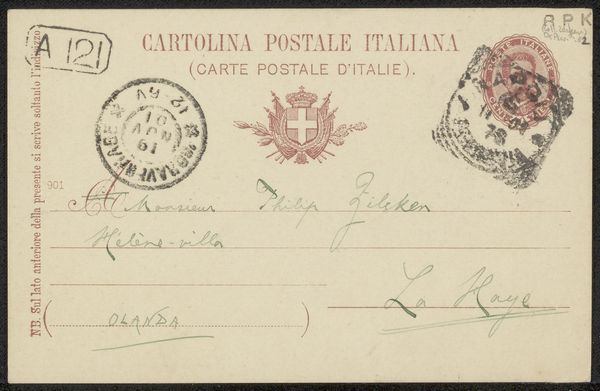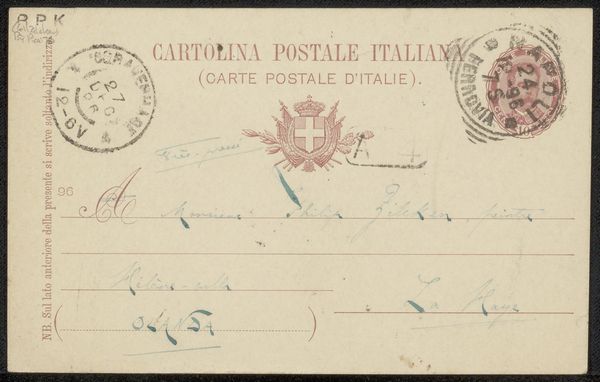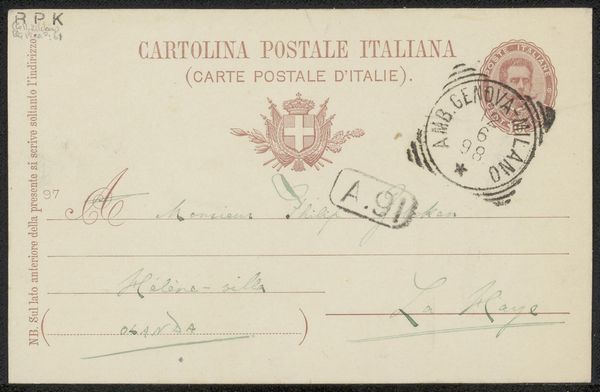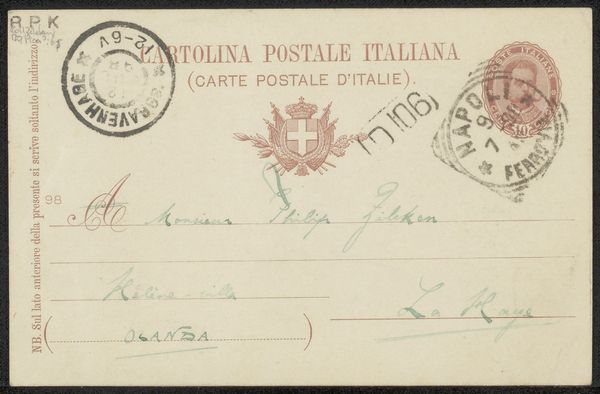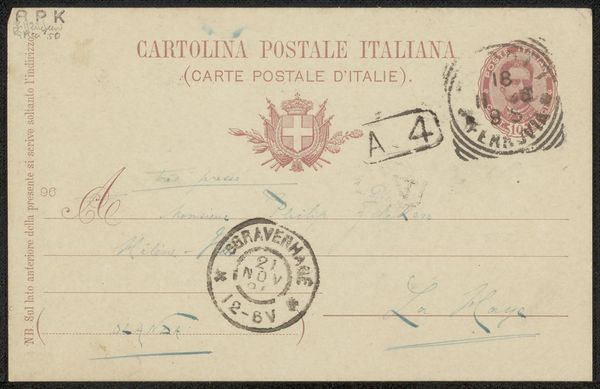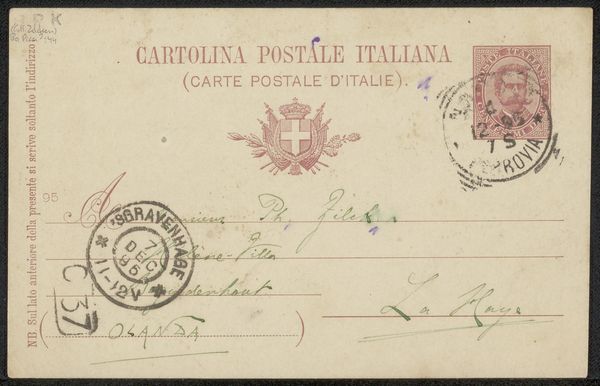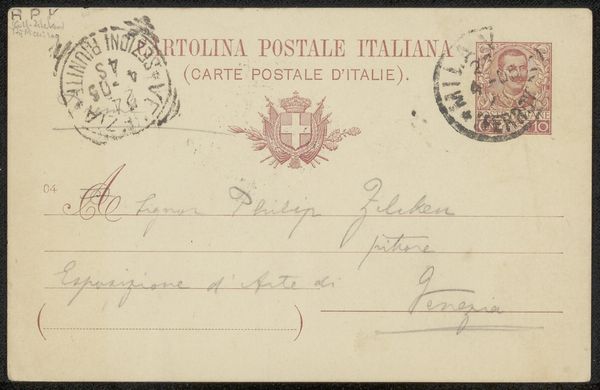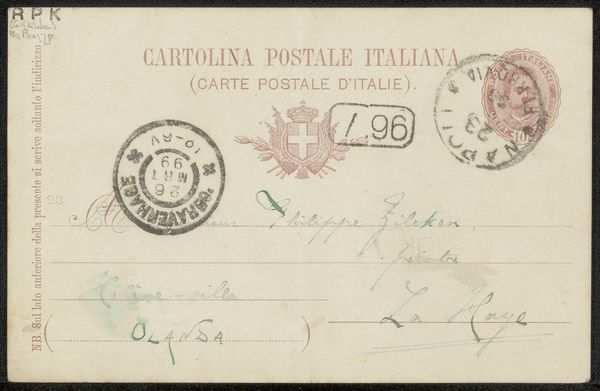
graphic-art, print, paper, photography, ink
#
graphic-art
# print
#
paper
#
photography
#
ink
#
watercolor
Copyright: Rijks Museum: Open Domain
Editor: Here we have "Briefkaart aan Philip Zilcken," possibly from 1899, by Vittorio Pica. It's a fascinating little object, a postcard combining photography, ink, and what looks like watercolor on paper. It feels very ephemeral and utilitarian, yet the handwritten elements suggest a personal touch. What grabs your attention in this piece? Curator: It's precisely that tension, isn't it? Between the mass-produced postcard format – a relatively new technology at the time, democratizing image circulation – and the unique marks of human labor: the handwriting, the stamped postal markings. Consider the production chain. The paper, the ink, the printing press... Each component is the product of industrial processes involving countless workers. Editor: So, you see the social aspect of its production first. Curator: Absolutely. Even the photograph itself is a material process, an alchemical transformation if you will. And then there's the act of writing, of selecting the ink, the pressure applied to the pen… What was Pica's relationship to Zilcken? Was the 'peintre' inscription added later? These questions are inseparable from understanding the work. Think about the postal system itself. It reflects state power, organization, and a promise of communication facilitated by human effort. Editor: That's a really interesting perspective, framing a simple postcard within these industrial and social systems. Curator: Exactly. We can think about this postcard as a nexus of social relations and technological developments, highlighting the complexities often hidden within seemingly simple everyday objects. What do you think the seal means? Editor: I hadn’t really considered its larger context until now! Thanks. Seeing it as a product of intertwined social systems really enriches its story.
Comments
No comments
Be the first to comment and join the conversation on the ultimate creative platform.
